Excursion to Freising
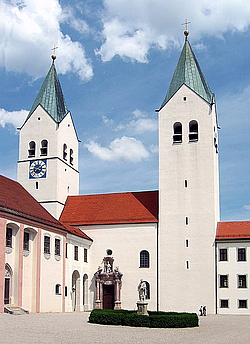
The afternoon excursion on Wednesday, 4th September, takes us to the ancient town of Freising (with tours through the reopened Freising Diocesan Museum and the cathedral; included in the conference fees; transport by train). This small but pretty town has a very long and interesting history. It is one of the oldest settlements in Bavaria, becoming a major religious centre in the early Middle Ages.
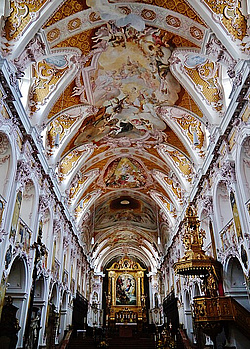
Schedule Excursion Freising
12 p.m.: End of morning programme in Munich: Followed by distribution of lunch packages and train tickets
12.45 p.m. Departure from the Academy Entrance Hall to Metro Odeonsplatz
1.29 p.m. Departure by train (RE 2/4860 to Hof) from Munich Central Station (Hauptbahnhof), Platform 32
2.07 p.m. (new arrival time!) Arrival at Freising, walk to the Domberg
2.30 p.m. – 4 p.m. Guided tours of the Freising Diocesan Museum (special exhibition ‘Tassilo, Korbinian und der Bär. Bayern und Freising um 724’)
4.15 p.m – 4.45 p.m. Guided tour of Freising cathedral
4.45 p.m. – 17.15 p.m.: Time to visit the cathedral district, state rooms and the special exhibition ‘724 Men, Power, Stories’ (no guided tours)
5.15 p.m. – 6 p.m.: Lecture of Prof. Aris in the historic cathedral library
6 p.m. – 7 p.m: Get-together
After that: Return to Munich
Freising
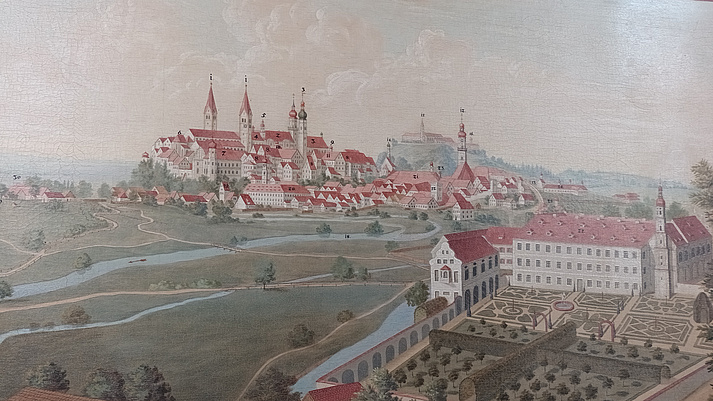
In the 8th century, we are in the time of the Agilolfinger dynasty in Bavaria. Under Theodoric, Raetia II, which included large parts of Bavaria (with Augsburg, Regensburg and Passau as the most important cities), was the northernmost defensive zone of the Roman Empire. It then became the south-eastern border area of the Merovingian Empire. Dukes from the Agilolfing dynasty, who also owned parts of the former Noricum (Salzburg), were appointed as administrators. After Charlemagne conquered the Lombard kingdom in 774, he subjugated Tassilo, the last Agilolfing duke, in 787. Bavaria came under the direct rule of the Carolingians.
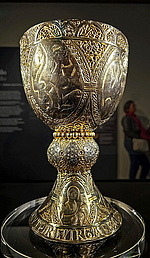
The state exhibition ‘Tassilo, Korbinian and the Bear’ in the Freising Diocesan Museum tells us about the time of the Agilolfing dynasty. To mark the 1,300th anniversary of the diocese, the Haus der Bayerischen Geschichte (House of Bavarian History) invites visitors of the Diocesan Museum on a journey back in time to medieval Bavaria - a Bavaria that extended as far as South Tyrol, Upper Austria, Carinthia and Slovenia back in the 8th century. They are accompanied by Tassilo, Korbinian and a bear - the three main characters of this year's Bavarian state exhibition.

The museum is located in the most historic place in Freising: on the Domberg. At the beginning of the 8th century, this hill was the castle and ducal palace of the Agilolfinger dynasty. It was also the site of St Mary's Church, which soon became an episcopal church. The origins of the current cathedral date back to the Romanesque period, but the church was repeatedly rebuilt over the centuries. There was also a valley settlement and a monastery on the opposite hill, where the Weihenstephan brewery is now located.
The state exhibition will be accompanied by a special exhibition entitled ‘724 Men, Power, Stories’ organised by the Diocesan Museum and the Freising Cathedral Church Foundation. This is thematically dedicated to the interplay between spiritual and secular power. Previously hidden State rooms within the so-called ‘cathedral district’ will be accessible.
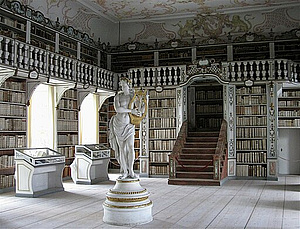
Guided tours of the ‘Tassilo-exhibition’ and the cathedral will be offered, followed by a lecture of Professor Marc-Aeilko Aris, Professor für Latin medieval philology at the Ludwig-Maximilians-Universität in Munich and rector of Freising cathedral. At the end of the afternoon there will be a small reception in the historic cathedral library. After the reception return to Munich by train. Of course it is possible to stay in Freising for dinner (NOT organized, NOT included in the conference fees).
In the footsteps of Arbeo von Freising (Bishop of Freising 764/65-783)
Dum minime explendi ceptum iter licere se agnosceret, prospiciens ipsam terram optimam, superficie amoenam, nemorosis locupletem, vino copiosam, ferro superfluam, auro et argento et purporis habundantem, proceros viros et robustos, caritate et humanitate fundatos, humum fertilem et segetum habundantem, iumentis et gregum omniumque, ut pene superficies telli coopertus esse videbatur, melli et apium copia epode habundans, piscium multitudine in stagnis et in amnis infusa, prospicuissimis fontibus et rivolis inrigua, sale, prout opus erat, condita (Arbeo, Vit. Em. cap. 6).
„Er sah jedoch ein, dass es ihm nicht vergönnt sein werde, die vorgenommene Reise auszuführen. Deshalb schaute er das Land an: es war sehr gut, lieblich anzusehen, reich an Hainen, wohlversehen mit Wein. Es besaß Eisen in Fülle und Gold, Silber und Purpur im Uberfluß; seine Männer waren hochgewachsen und stark, auf Nächstenliebe und Sitte gegründet. Das Erdreich war fruchtbar und brachte üppig Saaten hervor, und der Erdboden schien von Vieh und Herden aller Art fast bedeckt zu sein; Honig und Bienen waren wahrlich in reichlicher Menge vorhanden. In Seen und Flüssen gab es Fische in großer Zahl; das Land war von klaren Quellen und Bächen bewässert und besaß an Salz, soviel es bedurfte.“ (Translation by B. Bischoff)
This is one of the first descriptions of Bavaria. Here we look through the eyes of St. Emmeram, who arrives at his future place of work for the first time in the middle of the 7th century. The story was recorded by Arbeo von Freising in the 8th century.
